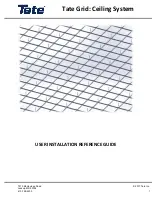
English
22
The ratings of the cooking areas are shown on the dia-
gram above.
Although the ceramic surface is very strong, a heavy or
sharp falling object (a salt cellar for example) might cause
the surface to crack. If you find a crack in the surface im-
mediately disconnect the appliance from the supply and
arrange for its repair.
Care should be taken that no water seeps into the appli-
ance.
The areas marked with two concentric circles have an in-
ner and an outer element. Turn the control knob clockwise
to heat the whole area for larger pans - turn it the other
way to just heat the inner part for smaller pans.
Never cook directly on the surface.
The kind of pan you use and the quantity of food affects
the setting required. Higher settings are required for larger
quantities of food.
Naturally, the surface must be washed after use in order
to prevent it from becoming scratched or dirty.
When cooking on the hob you may see the hob area you
are using switch off and on. This is caused by a safety de-
vice that limits the temperature of the hob. It is quite nor-
mal, especially when cooking at high temperatures. If it
happens a lot with a particular pan however it may mean
the pan is not suitable – perhaps too small or too uneven -
for a ceramic hob.
Sugar spillage will permanently damage the hob and
therefore must be cleaned off with care immediately.
Never let sugar spillage cool before trying to remove it.
If sugar or foods with high sugar content, aluminium foil or
plastic items are accidentally allowed to melt on the hob
surface remove them immediately from the hot cooking
area using a scraper to avoid any possible damage to the
surface. See ‘Cleaning your cooker’.
Never cut directly on the cooking surface.
Don't cook directly on the hob surface i.e. without a pan or
utensil
Don’t use the hob as a work surface
Don’t drag or slide utensils across the hob surface
Don’t place anything between the base of the pan and the
hob surface (i.e. asbestos mats, aluminium foil, Wok
stand)
Don't leave utensils, foodstuffs or combustible items on
the hob when it is not in use. (e.g. tea towels, frying pans
containing oil)
Don't place plastic or aluminium foil, or plastic containers
on the hob
Don't leave the hob zones switched on unless being used
for cooking
Don't place large preserving pans or fish kettles across
two heating zones
Don't place utensils partly covering a heating zone. Al-
ways place utensils centrally.
Never allow anyone to climb or stand on the hob.
Grill
Caution: Accessible parts may be hot when the grill is
in use. Young children should be kept away.
After placing your food on the grill tray pan, slide the grill
pan onto the side supports. Make sure it is pushed right in
and touches the backstop.
The grill has two heating elements, which allow either the
whole area of the pan to be heated or only the right hand
half of the grill pan to be heated.
Turn the knob to position 3.
For best results preheat for 2 minutes with the grill pan in
position. After placing your food on the grill pan grid, slide
the grill pan onto the side supports. Adjust the grill to suit
by turning the knob.
Never close the grill door when the grill is on.
The grill pan grid can be turned over to give two grilling
positions.
Don’t leave the grill on for more than a few moments, with-
out the grill pan underneath it.
The Ovens
Both ovens are fanned ovens. The fan circulates hot air
continuously which results in faster heat transfer to the
food.
Before using for the first time, heat the oven to 200°C for
30 minutes to dispel manufacturing odours.
Turn the oven knob to the temperature you need. The
oven indicator light will glow until the oven has reached
the temperature you selected. It will then cycle on and off
Содержание 90
Страница 2: ...2...
Страница 3: ...3 Deutsch 4 19 English 20 33 Fran ais 34 49...
Страница 50: ...50...
Страница 51: ...51...
Страница 52: ......
















































